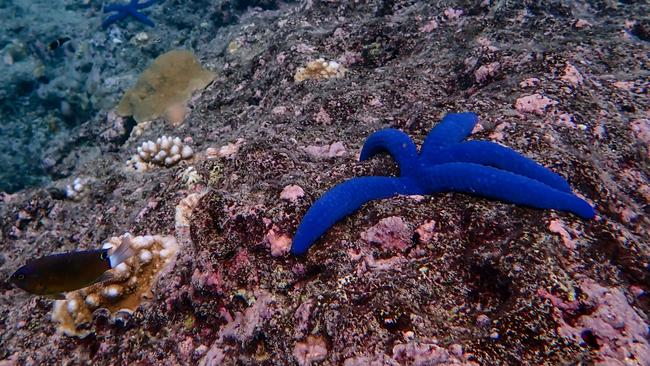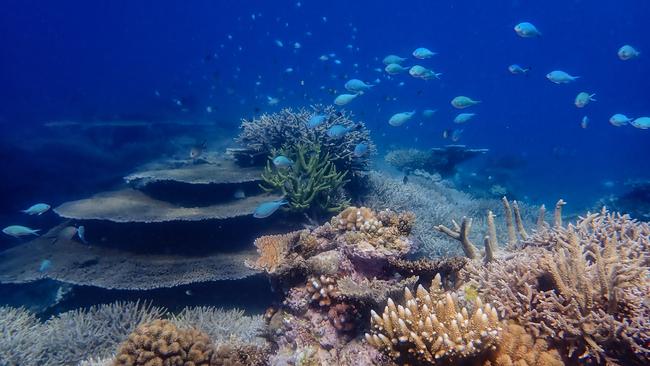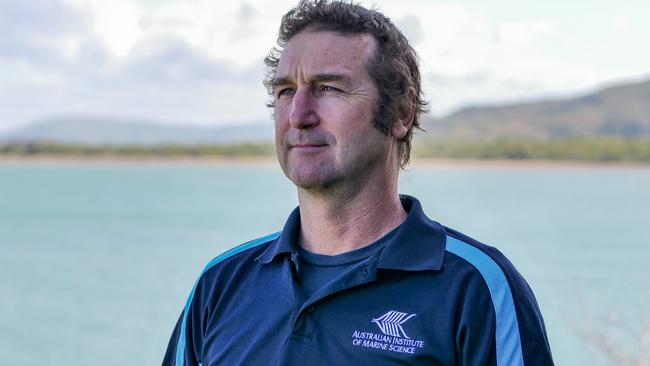Small coral decline but ‘one bad summer’ threat to Great Barrier Reef still exists
The Great Barrier Reef has recorded an impressive bounce back from the dark years of 2015-16, but experts are warning that the recovery is fragile.

The latest health check on the Great Barrier Reef is in and one expert has warned that it’s a “double-edged” result.
The Reef recorded a pause in coral recovery from the top tip of North Queensland to Gladstone across 2022-23, and average hard coral cover in the northern and central sections recorded slight declines.
Coral cover from north of Cooktown declined from 36.5 per cent to 25.7 per cent, while from Cooktown to Proserpine it declined from 32.6 per cent to 30.8 per cent.
The southern section, which stretches from Proserpine to Gladstone, held steady, moving from 33.9 per cent to 33.8 per cent.
The results, collected by the Australian Institute of Marine Science, follow an extended period of hard coral recovery.
In 2015, coral cover across the Reef was between 15 and 20 per cent.

“Since 2018, hard coral cover had been increasing in both the northern and central Great Barrier Reef after almost a decade of disturbances, including cyclones, predatory crown-of-thorns starfish outbreaks and the back-to-back mass bleaching events of 2016 and 2017, all of which caused widespread mortality,” the AIMS report states.
“This recovery was primarily, but not exclusively, driven by fast-growing but vulnerable branching and plate corals.”
AIMS research program director David Wachenfeld said the 2022 mass bleaching event had contributed to the pause in recovery.
“The 2022 coral bleaching event was not as severe as the 2016 or 2017 events but caused enough mortality to pause recent regional gains in hard coral cover,” Dr Wachenfeld said.
“The heat stress during the bleaching event also likely had sublethal effects, including reductions in coral growth and reproduction.”
Coral cover is now higher than it was when records started in 1985.

But senior research scientist Mike Emslie has warned that “one bad summer” could roll back the Reef’s recent gains.
“In the absence of any disturbances we probably would have expected a continuing increase, so I mean the fact that we’re at similar levels to last year really just highlights the (Reef’s) ongoing exposure to cumulative stresses,” he said.
“What the results really highlight is that the Great Barrier Reef still faces threats from many sources.”
Dr Emslie said rising temperatures were a key threat.
“If you do give the Reef a chance it can bounce back, which is awesome, that’s great news,” he said.
“But we’ve just got to temper that good news with the reality of what may be coming in the future.”
Originally published as Small coral decline but ‘one bad summer’ threat to Great Barrier Reef still exists



